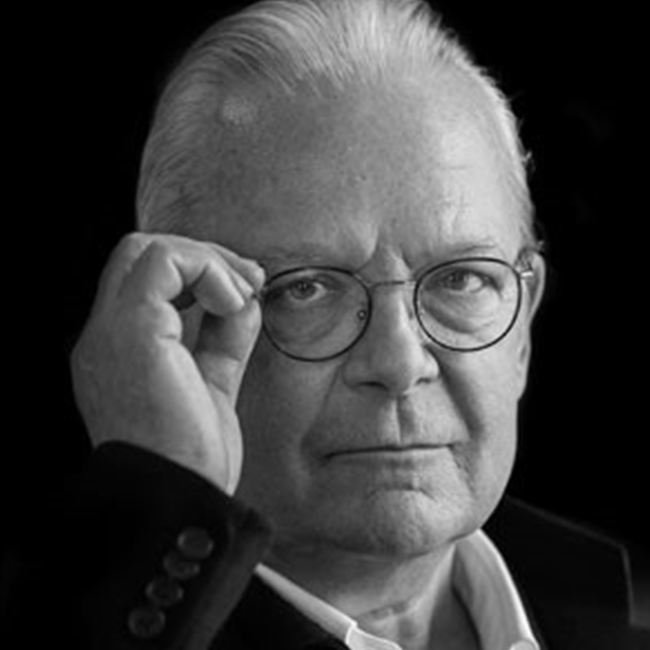Imi Knoebel
Born Klaus Wolf Knoebel in Dessau in 1940, he attended the Werkkunstschule Darmstadt in 1962, enrolling in a course taught by professors Johannes Itten and László Moholy-Nagy. It was there that he met fellow student Rainer Griese, who was similarly enamoured with the work of Malevich, and the pair became known as Imi & Imi, a shortened version of 'Ich mit Ihm' ('I with him'). They convinced Joseph Beuys to accept them as students at the Kunstakademie Düsseldorf and Beuys gave them the keys to Room 19, a studio adjacent to his legendary classroom in Room 20. It was in this space that Knoebel produced his defining early work, Raum 19 (1968), a modular structure composed of geometric shapes in unpainted Masonite, an unassuming industrial material that he has used throughout his career.
Since the 1990s, he has increasingly used shaped aluminium as the ground for his paintings, creating geometric colour fields that are defined by the relationship between the pigments and their boundaries. This use of a shaped ground is visually reminiscent of Minimalist works by American artists such as Frank Stella and Ellsworth Kelly, although Knoebel retains traces of the artist's hand in his gestural strokes of paint.
Imi Knoebel's resolutely abstract art investigates the fundamentals of painting and sculpture through an exploration of form, colour, and material. His aim is to uncover the basic material elements of art, which he locates in the simple interactions between humans and the essential conditions of our world. He remains true to the tradition of non-representational art, following in the footsteps of artists such as Kazimir Malevich or Piet Mondrian. The artist cites his discovery of Malevich's Black Square (1915) as a watershed moment that liberated his conception of painting, giving him 'the overwhelming feeling that I could start at nothing'. He has developed an experimental approach and serial way of working, characterised by a haptic use of colour, geometric vocabulary of forms and material simplicity.

Born Klaus Wolf Knoebel in Dessau in 1940, he attended the Werkkunstschule Darmstadt in 1962, enrolling in a course taught by professors Johannes Itten and László Moholy-Nagy. It was there that he met fellow student Rainer Griese, who was similarly enamoured with the work of Malevich, and the pair became known as Imi & Imi, a shortened version of 'Ich mit Ihm' ('I with him'). They convinced Joseph Beuys to accept them as students at the Kunstakademie Düsseldorf and Beuys gave them the keys to Room 19, a studio adjacent to his legendary classroom in Room 20. It was in this space that Knoebel produced his defining early work, Raum 19 (1968), a modular structure composed of geometric shapes in unpainted Masonite, an unassuming industrial material that he has used throughout his career.
Since the 1990s, he has increasingly used shaped aluminium as the ground for his paintings, creating geometric colour fields that are defined by the relationship between the pigments and their boundaries. This use of a shaped ground is visually reminiscent of Minimalist works by American artists such as Frank Stella and Ellsworth Kelly, although Knoebel retains traces of the artist's hand in his gestural strokes of paint.
Imi Knoebel's resolutely abstract art investigates the fundamentals of painting and sculpture through an exploration of form, colour, and material. His aim is to uncover the basic material elements of art, which he locates in the simple interactions between humans and the essential conditions of our world. He remains true to the tradition of non-representational art, following in the footsteps of artists such as Kazimir Malevich or Piet Mondrian. The artist cites his discovery of Malevich's Black Square (1915) as a watershed moment that liberated his conception of painting, giving him 'the overwhelming feeling that I could start at nothing'. He has developed an experimental approach and serial way of working, characterised by a haptic use of colour, geometric vocabulary of forms and material simplicity.
